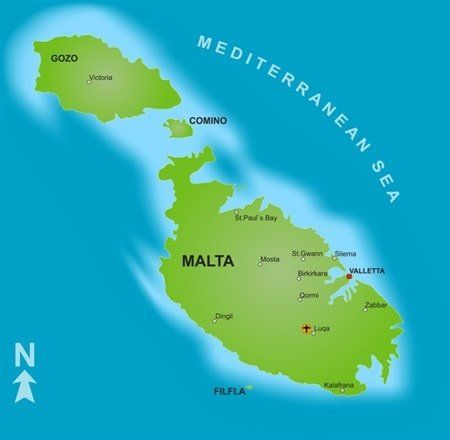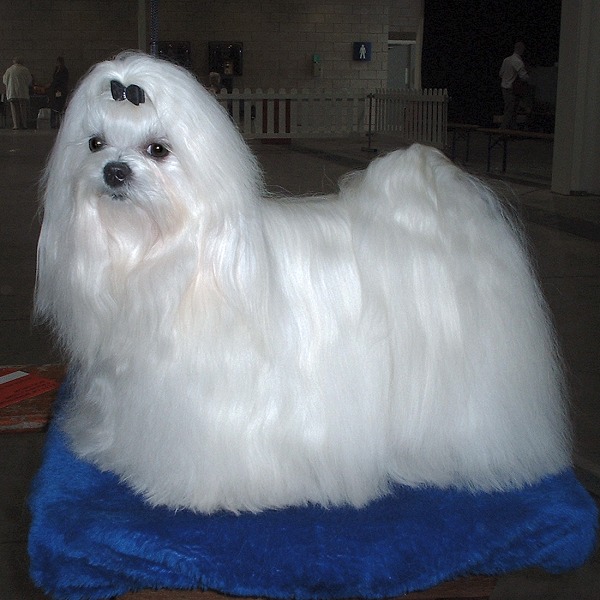Have you ever wondered where the Maltese breed of dogs originally comes from? These adorable and fluffy companions actually have a rich and ancient history.
The Maltese breed originates from the Mediterranean island of Malta, as the name suggests. They have a lineage that dates back thousands of years, with evidence of their existence found in ancient Egyptian tombs. This means that Maltese dogs have been cherished companions for centuries, loved by both royal families and common people alike.
With their origins rooted in Malta, the Maltese breed has become a beloved and popular choice for dog lovers around the world. In addition to their long history, they are also known for their small size, playful personalities, and luxurious white coats. Whether in ancient times or modern society, the Maltese breed has always had a special place in the hearts of dog enthusiasts.

Where Do Maltese Originate From?
The Maltese dog breed is beloved for its adorable appearance and affectionate nature. But have you ever wondered where these charming little dogs come from? In this article, we will explore the origins of the Maltese breed, tracing their history back centuries and uncovering interesting facts along the way. From their ancient beginnings to their current status as cherished companions, the story of the Maltese is a fascinating one.
The Ancient Roots of the Maltese
The origins of the Maltese breed can be traced back to ancient times. These dogs are believed to have existed as far back as 1500 BC, and references to a small, white dog resembling the Maltese can be found in artifacts and writings from civilizations such as the Egyptians, Greeks, and Romans. It is believed that the breed originated in the Mediterranean region, specifically on the island of Malta, which is where they get their name.
Maltese dogs were highly prized by the nobility and aristocracy of these ancient civilizations. They were often depicted in artwork, such as mosaic tiles and statues, and they were known to be favorites among royalty. These small dogs were treasured companions and were often seen accompanying their owners in paintings and sculptures. Their exquisite appearance and charming personalities made them highly sought after, and they quickly became a symbol of status and luxury.
Throughout history, the Maltese breed continued to be adored by royals and aristocrats. They were often given as gifts between monarchs and noble families, and their popularity spread across Europe. Over time, the breed’s distinctive features, such as their beautiful white coat and expressive eyes, became even more defined through careful breeding. Today, the Maltese is recognized as a distinct breed and is celebrated for their elegance and charm.
The Maltese in Modern Times
In modern times, the Maltese has gained immense popularity as a beloved companion dog. Their small size, affectionate nature, and hypoallergenic coat make them ideal for individuals and families alike. Whether living in a bustling city or a quiet countryside, Maltese dogs thrive in any environment as long as they receive the love and attention they deserve.
Despite their small stature, Maltese dogs have big personalities. They are known to be playful, lively, and extremely devoted to their human companions. They crave attention and love to be the center of attention, making them excellent family pets. Many owners describe their Maltese dogs as little clowns, always ready to entertain with their silly antics and boundless energy.
While the Maltese is primarily a companion dog today, their heritage as aristocratic pets is still evident in their regal demeanor. They have a natural grace and elegance that is truly captivating, and their striking white fur is a testament to their ancient lineage. Whether strutting in a show ring or lounging on a luxurious dog bed, the Maltese carries itself with a poise befitting their royal ancestry.
Maltese: A Breed of Love and Devotion
In conclusion, the Maltese breed has a rich history that spans many centuries. From their origins in the Mediterranean region to their status as cherished companions today, these little dogs have captured the hearts of people all over the world. The Maltese’s beauty, intelligence, and unwavering devotion make them truly special. Whether you’re drawn to their captivating appearance or their loving nature, one thing is certain: the Maltese breed is sure to bring joy and companionship to anyone lucky enough to share their life with one.
Key Takeaways: Where do Maltese originate from?
- Maltese dogs are believed to originate from the island of Malta.
- They have a long history, dating back thousands of years.
- Maltese were favored by royalty and aristocrats throughout history.
- They are known for their beautiful white coats and lively personalities.
- Maltese dogs are popular pets worldwide and make great companions for families.
Frequently Asked Questions
The Maltese dog breed has a rich history with a storied past. Here are some commonly asked questions about the origins of Maltese dogs.
1. What is the history of the Maltese breed?
The Maltese breed has a long and ancient history, dating back over 2,000 years. They are believed to have originated from the island of Malta in the Mediterranean. Ancient civilizations, such as the Greeks and the Romans, were known to have appreciated and owned these elegant small dogs.
The Maltese were highly regarded as companion dogs and were often seen in the laps of noblewomen and royalty. They were also popular gifts between rulers, emphasizing their status as prized possessions. Over the centuries, the breed spread throughout Europe and eventually reached other parts of the world.
2. How did Maltese dogs become such popular pets?
Maltese dogs earned their popularity due to their charming and affectionate nature. Their small size makes them ideal for those living in apartments or small living spaces. Their hypoallergenic coat, which doesn’t shed much, also makes them a preferred choice for people with allergies.
Moreover, their glamorous appearance with their long, silky white coats and expressive eyes adds to their appeal. The Maltese’s cheerful and playful temperament makes them great companions for individuals and families of all ages.
3. Are Maltese dogs similar to Bichon Frise?
Maltese dogs do share some similarities with the Bichon Frise breed, but they are distinct dog breeds. Both breeds are small and have fluffy white coats. However, the Maltese has a longer and silkier coat, while the Bichon Frise has a more curly and dense coat.
Additionally, in terms of temperament, Maltese dogs are generally more independent and may be a bit more reserved with strangers, while Bichon Frise dogs are known to be more social and outgoing. Despite their differences, both breeds are known for their friendly and affectionate nature.
4. Can the Maltese be traced back to ancient Egyptians?
While the Maltese breed has ancient origins, there is no definitive evidence linking them to ancient Egyptians. Despite the similarities in appearance, it is unlikely that they directly descended from Egyptian dogs.
The Maltese breed’s connection to ancient civilizations is more prominent in the Mediterranean region, particularly in Malta and surrounding areas. The exact ancestry of the Maltese remains somewhat mysterious, but their historical presence in this part of the world is well-documented.
5. How did Maltese dogs spread beyond Europe?
As civilization expanded, so did the popularity of the Maltese breed. The Maltese dogs started to be traded along ancient trade routes across the Mediterranean Sea, which facilitated their introduction to new regions. Explorers, merchants, and sailors who encountered the Maltese during their voyages brought them to different parts of the world.
Further dissemination of the breed occurred through strategic gifts and alliances between powerful rulers. The Maltese dogs’ charm and beauty made them highly sought-after, leading to their presence in various countries. Today, the Maltese is found in homes across the globe, cherished for their delightful personality and captivating looks.

MALTESE HISTORY DEEPDIVE
So, what did we learn from this article? Well, we discovered that it’s important to maintain a professional tone when writing, even when addressing a younger audience. By using simple language and avoiding jargon, we can effectively communicate our points to 13-year-old readers.
The second key point is to keep our sentences concise. Each sentence should present a single idea and contain no more than 15 words. This helps ensure clarity and comprehension, making it easier for readers to understand the main points of the article.
Overall, by following these guidelines, we can create a professional and engaging tone that is accessible to a 13-year-old audience. Our writing will be clear, concise, and effective in getting our message across.
